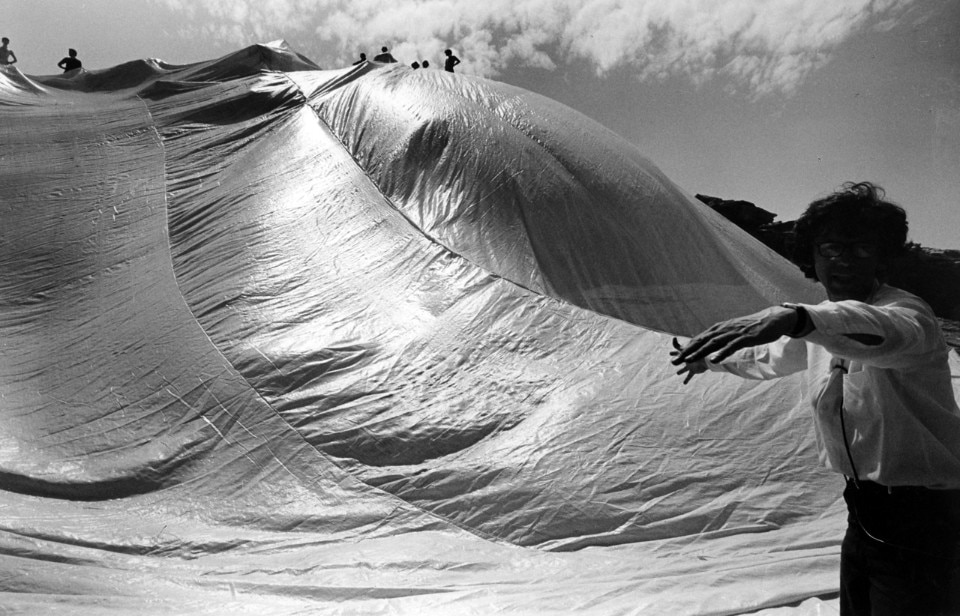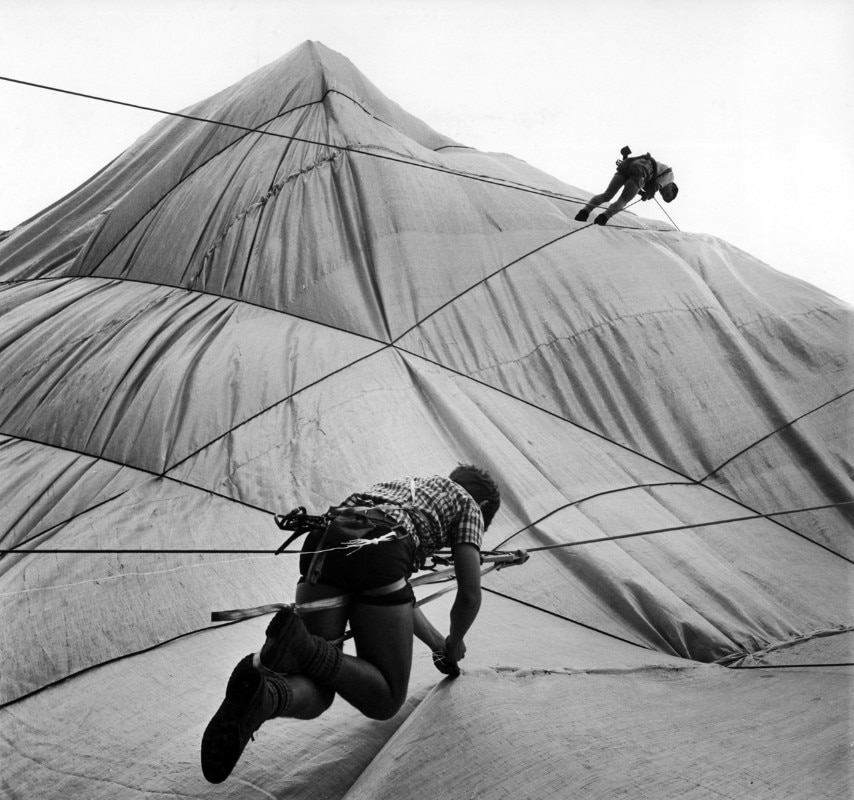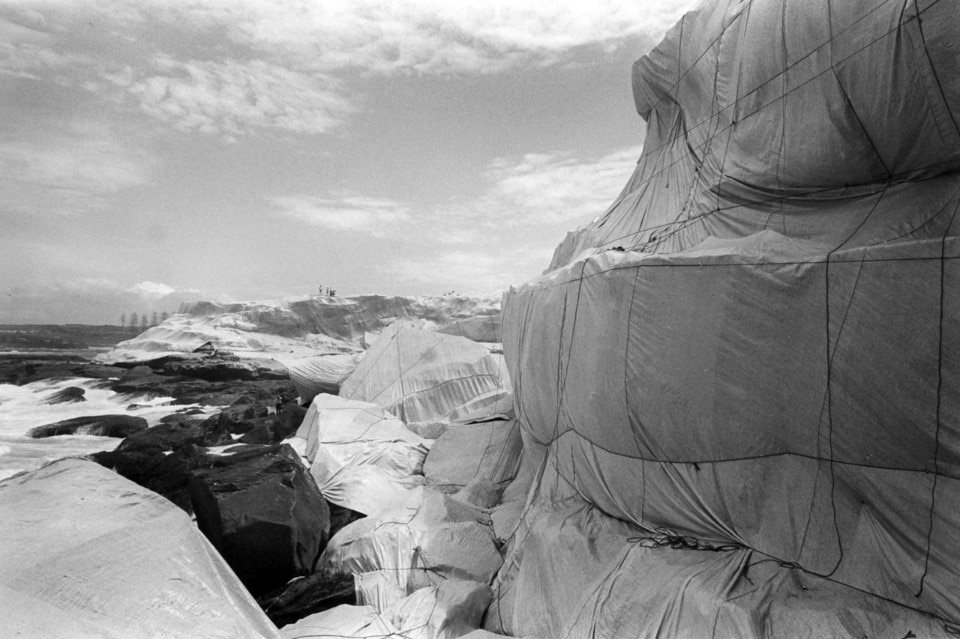At Little Bay, on the coast near Sydney, October brought a soft covering of nylon that shrouded the edge of the continent where it falls off into the waves of the sea. A hurricane skinned the rocks alive, but it didn’t last for long. A wind that whistled like a cat continued for a month to work its way under the sails of the sheeted reef causing shock after shock of electric ripples. And all the lazy ants on vacation were saved from the clutches of death thanks to the respiration of the polypropylene fabric. Once again it was a matter of art with ali the manna of imagination, but this time on a rather special scale. In Australia, this was the October of the “wrapped coast”. No, just yet we haven’t discovered a style adequate for the description of Christo’s adventures. A raging style perhaps for the rage of these solitary labors of Hercules that are also a mad, mad business enterprise in high-finance acrobacy on the part of Seven Wonders Lld., as well as an adventure in modern-day monomania. It doesn’t even seem to me that there is any longer any reason to be amazed – Christo manages to pull it off, and he’s making us get used to his ability to pull it off. His notion of the impossible, which is the simple idea of that Unknown who always makes us say “oh, but that’s impossible”, and which is also the back-bone of ali of his art – well by now this idea finds us ready to accept it.


We are in the presence of an art at level that is giving us clear indications of the over-hangings to be surmounted what we’re concerned with here is not the evolution of art, or the bypassing of artistic tendencies, but rather the formulation and definition of conflict and struggle within the terms of an individual adventure. In addition to his capacities for formal invention, Christo shows us that the possible meaning of what we call art is a matter of the free choice of aims and objectives – the aims and objectives that non-artists know only in terms of imposition, and in this sense he de-mythicizes everything that is done in its name. There is in fact, nothing mythical in the colossal work of Christo. This perhaps is the point that must most often be repeated - the realization of Christo's work depends only and entirely upon the will and energy of the artist himself.
When the Australian firm Alcorso-Sekers Fabrics offered him the three-thousand dollar prize that is usually given to an Australian artist so that he can get to know something of the outside metropolitan world, Christo replied with the project for the “wrapped coast” – a project to be performed to the tune of one-hundred and -twenty-thousand dollars. The Aspen Center of Contemporary Art came through with another ten thousand, and Christo had to dig up the rest through collectors and by obtaining materials at cost. These details serve, perhaps, lo indicate the magnetic power that the “escalation” of these projects has upon our cultural institutions. Still another result: the laws of the market and the laws of capitai value are turned topsy-turvy without the excuse or the compensation of technical or scientific research. The compensation remains within the domain of the aesthetic and is entirely contained in the adventurous construction of these white reefs in the work of those who did the job, and in the imagination of the man who conceived it.

